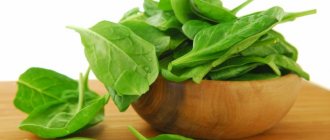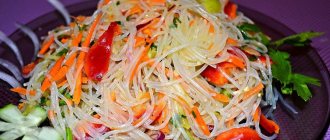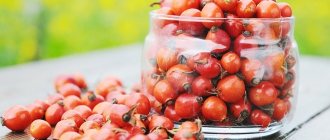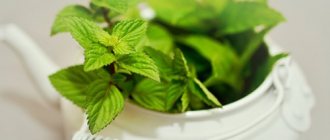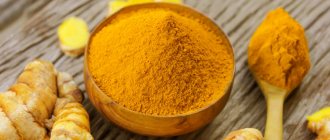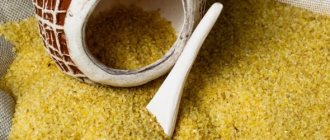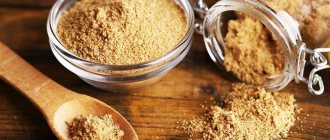Researchers believe that onions initially began to be cultivated in Afghanistan, then they appeared in other Asian countries, and then they were taken to Egypt and Greece, after which they finally came to Europe. In Rus' they began to cultivate it only in the 12th century. Onions are a special vegetable; it is not for nothing that they are so actively used in folk medicine. It is also useful for children, and today we will tell you at what age it should be introduced into the diet, how to use it for medicinal purposes and avoid health problems.
Composition and beneficial properties
Onions consist of 86% water, about 8.2% carbohydrates, 1.4% proteins, and only 0.2 g fats. It contains a complex of 12 essential acids that the human body cannot produce on its own. Among them, the largest share belongs to tryptophan - 5% of the total mass. This amino acid increases the production of serotonin, helping to improve mood. Onions contain a significant amount of ascorbic acid and tocopherol, as well as a full complement of B vitamins (thiamine, riboflavin, pyridoxine and pantothenic acid).
In early spring, when young onions are not yet ripe, and the fruits are no longer so rich in vitamins, onions will become a thorough nourishment for an organism weakened by vitamin deficiency. With proper storage, almost all useful substances remain active in it. Due to the high content of vitamin C, onions improve immunity. Other advantages of the famous vegetable:
- An effective antiviral agent - the essential oils released by onions help fight colds and flu; it is enough to inhale them periodically throughout the day. Can also be used to prevent viruses.
- Onions contain a colossal (compared to other vegetables) amount of phytoncides - special volatile substances that have an antibacterial effect. They are active against streptococcal infections, Koch bacilli (tuberculosis), pathogens of diphtheria and dysentery, as well as many other equally dangerous ailments.
- Helps with anemia - the combination of folic acid and iron helps increase hemoglobin. To improve your blood composition, it is enough to consume onions in any form: raw or after heat treatment.
- With regular consumption of onions, lipid metabolism is activated and the blood is cleansed. However, in excessive quantities, as well as in certain diseases of the digestive system, it can be harmful and even dangerous.
- Onions contain calcium, which has a beneficial effect on the cardiovascular system.
- Helps with constipation, including long-term constipation.
- Onion has a pronounced stimulating effect - it improves the condition of high blood pressure, a weakened state, including after a protracted illness.
- Onions are recommended to be used for sleep disorders - they have a mild, absolutely safe hypnotic effect.
It is believed that onions reduce the likelihood of cancer and inhibit the development of malignant cells.
At what age can you give your child onions: onions, boiled and raw?
Everyone knows about the benefits of onions. And this is not surprising. After all, this vegetable is a storehouse of vitamins, and when used correctly, it is a prevention and cure for many diseases. Taking into account all these beneficial properties, all mothers are wondering: at what age can you start giving your child boiled or raw onions?
The scope of application of this product is very wide. It is added to food in fresh, fried, baked and boiled form. Onions are used as a medicine for coughs and runny noses, and also as an ingredient for preparing various hair and face masks.
Benefits and harms for the child
Onions will be especially useful in the following cases:
- With a lack of vitamins. Onions are a source of beta-carotene, vitamins B1, B3, E and C, as well as various minerals, fiber and essential oils.
- To normalize glucose and cholesterol levels.
- To strengthen the walls of blood vessels and have an antitumor effect. This is achieved thanks to the quercetin content in it.
- To increase appetite. That is why it must be included in the diet of a child who is not gaining weight well.
- To improve the condition of teeth and the entire oral cavity. Chewing green onions helps kill harmful bacteria.
- To increase the overall tone of the body.
- To combat helminths.
- As a sedative for a child. Onions with honey and milk - this is a recipe for a drink that will improve sleep.
The first layers of the vegetable under the peel are the richest in vitamins, and the bulb, or rather its bottom, contains a large number of phytoncides - biologically active substances that kill pathogenic bacteria.
Along with numerous benefits, eating or using onions can cause harm:
- A fresh vegetable is a spicy product. It may irritate the mucous membranes of the digestive tract.
- Raw onions are tough, so they should only be given to children who can handle them thoroughly. Or it must first be finely chopped.
- If you have diseases of the gastrointestinal tract, liver, kidneys or bronchial asthma, green onions should be excluded from the diet.
- Fresh vegetables can cause allergies.
Raw onions and garlic should be given to children of any age in small quantities. And only in combination with other products. For example, with bread, soup, salad and other dishes.
When to start giving it to your child
From what months can you give your baby onions? Recommended age: 7-8 months. This is exactly the period when the baby has already become acquainted with other vegetables. Up to 1.5 years, only boiled product can be included in the diet.
Due to heat treatment, the amount of vitamins in it is naturally noticeably reduced. But only in this form will it not irritate the child’s gastric mucosa. It is important to note that even boiled onions will be difficult for a baby to digest.
Therefore, before giving it to your baby, you must first grind it to a mushy state with a blender.
Complementary feeding of an infant begins with half a teaspoon. Gradually this dose increases to 3 tsp. onions a day. Most often, the vegetable is added to purees (potato, carrot, zucchini, etc.). And already in this form, the child usually eats onions with pleasure.
Fresh onions or green onions are not recommended for children under 3 years of age. However, if a child has any disease of the gastrointestinal tract, then only a doctor can decide when to add this product to his diet.
Bow from seven ailments
So, we figured out when you can start giving onions to children. But this product, as mentioned at the beginning of the article, has a wide range of applications. It is especially often used for medicinal purposes:
- From cough;
- from a runny nose;
- for prevention.
Cough remedy
Onions are great for treating coughs. Children can eat it boiled or raw. For dry coughs, it stimulates the bronchi, which improves mucus discharge.
For best results, raw vegetables should be given with plenty of liquid, such as milk. This is necessary in order to soften the effect of onion juice on the child’s stomach.
This method can only be used for children over 3 years old after consulting a doctor.
Eating onions not only relieves cough, but is also good for the immune system in general - it prevents re-infection.
Help with a runny nose
Onion drops are an effective remedy for a runny nose. To prepare such an antiviral medicine, you need to chop the vegetable, squeeze out the juice and add olive oil (2-3 drops of juice per 1 spoon of oil). Using this recipe, you do not have to worry about burns to the nasal cavity. But this method of treatment can only be used for children over 12 years of age.
If your baby is not yet a year old, then a runny nose should be treated strictly under the supervision of a doctor. Otherwise, self-medicating can only harm the child more. After all, children under one year old rarely have bacterial rhinitis. And in the first 70 days of life it can be physiological in nature or caused by allergies.
Prophylactic
Onions are also often used to prevent viral diseases, especially during periods of epidemics.
This method of use has been known to everyone since childhood: if one of the family members gets sick, so that others do not catch the infection, the onion is finely chopped and left in the room.
The saucer with shredded vegetables should be left out of the reach of children. It is important that the room smells. Therefore, the product must be changed every 2-3 hours.
How is this method useful? It's all about the phytoncides that are contained in this vegetable. They destroy viruses and germs in the air, thereby reducing their concentration in the room and, consequently, the likelihood of getting sick.
The product can be used in this way for children of all ages. However, you need to remember that it is unsafe for newborns to breathe onions. It can become an allergen or cause a burn to the infant's respiratory tract or skin.
Children eat onions: funny video compilation
Onion is a unique plant that has many beneficial properties: antimicrobial, analgesic, anti-inflammatory, antiseptic, etc.
It is rich in vitamins, is an essential ingredient in many dishes and an excellent way to boost immunity. When used correctly, it can help get rid of a variety of ailments, including childhood diseases.
But when to introduce it into complementary foods and how to use it as a medicine for a child should be checked with a doctor.
Source: https://EdaKarapuza.ru/pitanie/produkty/luk-rebenku.html
Using onions for medicinal purposes
Even in ancient times, healers actively used onions. Today this vegetable is no less popular in folk medicine:
- For otitis media, you need to finely chop the onion, heat it in a steam bath (previously wrap it in gauze), and apply it to your ear three times a day.
- Onion juice is used to get rid of dandruff and strengthen hair, to reduce the unpleasant odor, you can add honey, egg yolk and cognac to it.
- If you have a sore throat, you should drink a teaspoon of onion juice three times a day.
- For a runny nose, a mixture of grated onions mixed in equal parts with honey helps - take orally every 2.5-3 hours.
- For chronic tonsillitis (inflammation of the throat), fry the onion in butter and lubricate the child's tonsils up to 6-9 times daily. This remedy is also effective against sore throat.
- To heal the wound, it is necessary to apply a gruel of grated onion to it.
- To get rid of a boil, you need to bake the onion, cut it into two halves, then apply and fix the cut to the inflamed area. Update every 4 hours.
Onion juice is effective for intestinal problems, including inflammation. Treatment consists of drinking 1 teaspoon of juice before each meal. If your baby is bitten by a wasp, immediately rub the area with an onion cut in half - the pain will go away much faster.
Rules for introducing complementary foods

- White and red onions are better suited for feeding small toddlers. It is not as bitter as onion. But it contains many useful substances in its composition.
- You also need to understand that for children we choose only fresh and high-quality products.
- A very important condition is the integrity of the vegetable, the absence of dents and putrefactive places.
- When you press on the onion, it should be hard and certainly not release any juice.
- You should not purchase vegetables in a sprouted state.
- Give preference to onions grown in the garden.
- There is no need to give your toddler raw onions until he is three years old.
- And as always, we add a new vegetable to complementary foods in small portions, as an addition to puree or soup. And only with normal tolerance we increase the portion. But there shouldn’t be too much onion on the baby’s menu. If the reaction is bad, we postpone the introduction of the vegetable for several months.
At what age can a child have onions?
Boiled onions are allowed in a child’s diet from 7 months, but it is better to wait until 8 months. For bottle-fed children - two months earlier. As for raw onions, in particular, onions and green onions, such products should not be introduced into complementary foods for the baby until the age of three.
You should start complementary feeding by adding half a teaspoon of boiled onion (preferably red or blue) to the main dish. There is no need to give your baby onions in their pure form, the little one will spit for a long time. If the child responds normally to new complementary foods, increase the portion and bring it to three teaspoons per day.
I introduced onions into complementary foods when my son was 8 months old. At this time, she was slowly giving bicomponent purees. And so I decided to add a little boiled onion to a dish of carrots and potatoes. The baby responded well. Therefore, I was able to calmly continue introducing this valuable phytoncide.
At what age can children have onions?
Before reaching the age of 1 year, children should not be given raw onions, only boiled ones. Since it has a sharp, specific taste that most kids do not like, it is best to add the vegetable to first and second courses: soups and vegetable purees. The optimal period for introducing onions into a child’s diet is 7–8 months; if he is bottle-fed, from 6–7 months.
Important! Children are introduced to onions after becoming familiar with cabbage, zucchini, carrots and other vegetables.
A child can be introduced to raw onions after a year, and then only in minimal quantities, most often as part of salads. When the baby grows up to three years old, the amount of vegetables in the diet can be increased - up to 0.5 onions per day. Never offer onions separately, only together with other products: with bread or as part of salads. With the onset of summer, give your child green onions.
At what age can you give onions to a child: | Dietary food for children
By semenarossii On Oct 26, 2018
- Benefit
- Minuses
- From what month can complementary foods be introduced?
- In what form should it be given?
- Delicious recipes
- Tips for choosing
- Use in folk medicine
Onions have long been considered a healthy product, but the introduction of this vegetable into children's menus raises concerns and questions among parents. To prevent it from harming the baby’s health, mothers should learn more about the value of such a vegetable crop for the child’s body, the optimal time of introduction and some other features of its use.
Benefit
- It is a source of vitamins B1, E, C, B3 and beta-carotene. It contains a lot of minerals (calcium, sodium, copper, cobalt phosphorus), essential oils and fiber.
- Due to the content of flavonoids, it is able to strengthen vascular walls and prevent tumor processes.
- Raw onions have the ability to increase appetite and stimulate the secretion of digestive juices, as well as mucus in the bronchi.
- Eating the product raw stimulates metabolic processes and normalizes intestinal function.
- Heat-treated onions do not irritate the gastrointestinal tract, normalize stool, and have a beneficial effect on heart function and blood glucose levels.
- Chewing green onions has a positive effect on the condition of the teeth and oral cavity, destroying harmful bacteria.
Young children should be given onions with caution for the first time.
information on the benefits of green onions, see the program “Live Healthy.”
Minuses
- When eaten fresh, it is a pungent product that can irritate the mucous membranes of the digestive tract.
- In its raw form it is quite hard, so it should be given to children who can chew such a product well, or it should be thoroughly crushed for the child.
- Boiled onions lack phytoncides and vitamins are partially lost.
- Green onions should not be consumed if you have diseases of the gastrointestinal tract, kidneys or liver.
- Both onions and green onions should not be taken if you have bronchial asthma.
- An allergic reaction is possible to fresh onions, but, as a rule, when boiled, allergy sufferers consume them without any problems.
Fresh onions can cause problems with the gastrointestinal tract in a child.
For information about which is healthier: green onions or onions, see the program “Live Healthy.”
From what month can complementary foods be introduced?
Introducing onions is recommended at the age of 7-8 months, when the child tries vegetable complementary foods. We are talking about a heat-treated product.
Raw onions, as well as green onions, are introduced into children's menus after 3 years in the absence of diseases of the digestive tract.
In what form should it be given?
Children under one year of age are given onions only boiled, adding this vegetable to a puree of other vegetables, for example, zucchini, carrots, pumpkin or potatoes.
Cooked onions don't contain as many vitamins as raw onions, but they won't upset your stomach.
Raw onions for children over 3 years of age are added to salads, first and second courses. It can be consumed per day in quantities of no more than one medium onion, which is divided into 2-4 meals.
Delicious recipes
- Baked. The onion is greased with olive oil and baked for 40 minutes in the oven. This product has a mild and very pleasant taste.
- Stuffed. The filling for the bulbs can be either vegetable or meat, for example, ground turkey. The onions, washed and peeled from the inside, are filled with filling and steamed or baked in the oven. You can sprinkle the stuffed onions with cheese on top.
- Omelette. Most often, green onions are used for this dish. It is finely chopped, topped with beaten egg and a little milk and baked in the oven or fried in a frying pan.
- Salads. Onions are often an ingredient in cucumber and tomato salad dressed with sour cream. You can also add chopped onions to salads made from boiled vegetables - beets, carrots, potatoes.
To the surprise of many, baked onions are a very tasty dish.
Tips for choosing
Red and white onions are more suitable for feeding a child, as they are less spicy and have a more pleasant taste than yellow varieties. Children can also cook leeks, which have neither a strong taste nor an irritating odor.
When choosing onions, buy dense heads with dry, intact skins, without green feathers or any dark areas. When buying green onions, pay attention to the freshness of the product.
Use in folk medicine
Raw onion is often used to treat cough by mixing it with sugar/honey and milk. This product can be used in children over 3 years of age after meals. It has a general strengthening and immunostimulating effect, enhances the secretion of the bronchial glands and eliminates dry cough.
Onion juice is known as an effective remedy against a runny nose and ear pain, but such use of this vegetable in childhood is strictly contraindicated due to the high risk of developing burns to the mucous membranes.
To eliminate a runny nose or use it as a disease prevention during a flu epidemic, onions can be used for inhalation. To do this, the bulbs are cut and laid out around the room in which the sick child is staying. The effect is only from fresh vegetables, so it is changed every two to three hours.
all-dieti.ru

